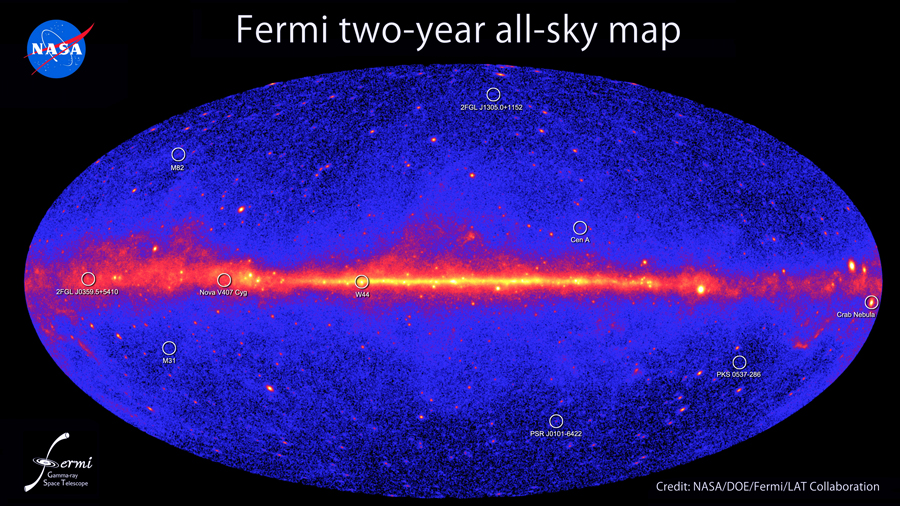Gamma rays are the highest energy photons on the electromagnetic spectrum. Their wavelength is similar to the size of an atom, and when two of them collide they tend to produce a matter-antimatter particle pair. They represent energy high enough to synthesize the fundamental particles of matter, and are produced in the highest energy environments in the cosmos. The interchange of matter and energy works both ways, so one of the ways gamma rays are generated is through annihilation of a matter-antimatter particle pair. Looking back to the beginning of the universe it gives us the earliest ‘chicken or egg’ dichotomy, but that is a topic for another time.
Gamma rays in the universe are produced by pulsars, supernovae and their remnants, and active galactic nuclei (galaxies with supermassive black holes). But there are other sources that were surprising, and we’re still unsure what some of them are.

Recently, a new gamma ray source was detected that confirms scientists’ long-standing suspicions – Colliding stellar winds from massive binary systems is producing gamma rays.

Stellar winds are not winds in the traditional sense. They are waves of charged particles, electrons and protons, radiated away by the strong magnetic fields of stars. The winds from our Sun are the result of solar flares and chaotic magnetic loops, and the end result is the gorgeous aurora that we see here on Earth.
But the stellar winds from the Sun are weak in comparison to that of massive stars, which have stronger magnetic fields, more intense flares, and release a consistently dense blast of charged particles into space. Now imagine putting two of these stars in a close orbit, both firing stellar winds off in all directions. The shock barrier where the winds from the two stars meet is colliding the charged particles together in a way that is similar to a supercollider on Earth, like the Large Hadron Collider at CERN.
The result is the production of gamma rays that are fired off in all directions, some of which make it to Earth to explain the source we see. The well known example of a gamma ray producing binary is Eta Carinae, a massive pair of stars in the southern sky. The stars weigh 120 and (30-80) solar masses respectively, and have a power output millions of times greater than the Sun. but it was the discovery of a second binary system producing gamma rays that confirms them as a standard source.
Moving forward, astronomers will look at more examples of massive binaries, while trying to characterize all of the strong gamma ray sources seen by Fermi. Looking at the universe across the electromagnetic spectrum let’s us understand its evolution as a whole, allowing us to do what science does best. Explain the past, understand the present, and predict the future.
